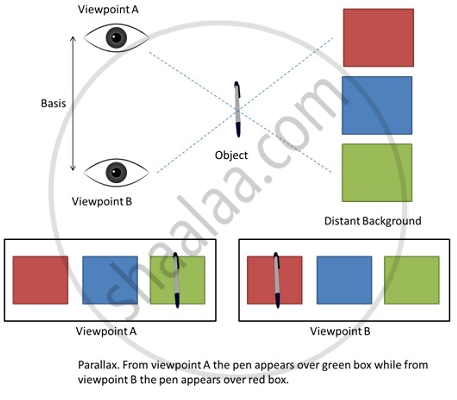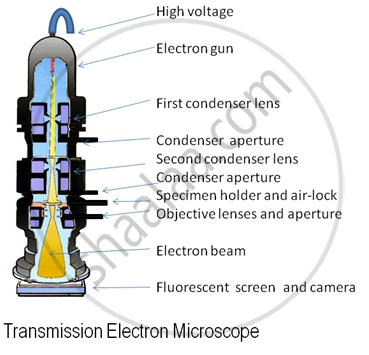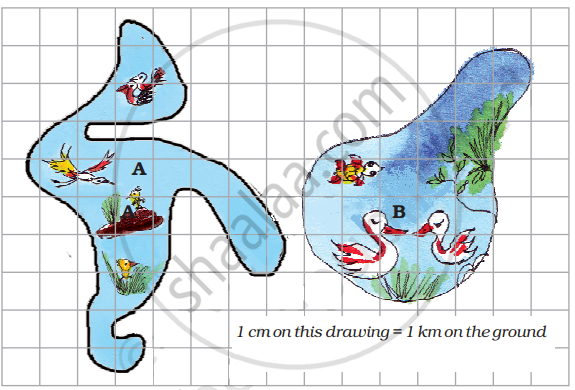Topics
Units and Measurements
- Introduction of Units and Measurements
- System of Units
- Measurement of Length
- Measurement of Mass
- Measurement of Time
- Dimensions and Dimensional Analysis
- Accuracy, Precision and Uncertainty in Measurement
- Errors in Measurements
- Significant Figures
Mathematical Methods
- Vector Analysis
- Vector Operations
- Resolution of Vectors
- Multiplication of Vectors
- Introduction to Calculus
Motion in a Plane
- Introduction to Motion in a Plane
- Rectilinear Motion
- Motion in Two Dimensions-Motion in a Plane
- Uniform Circular Motion (UCM)
Laws of Motion
- Introduction to Laws of Motion
- Aristotle’s Fallacy
- Newton’s Laws of Motion
- Inertial and Non-inertial Frames of Reference
- Types of Forces
- Work Energy Theorem
- Principle of Conservation of Linear Momentum
- Collisions
- Impulse of Force
- Rotational Analogue of a Force - Moment of a Force Or Torque
- Couple and Its Torque
- Mechanical Equilibrium
- Centre of Mass
- Centre of Gravity
Gravitation
- Introduction to Gravitation
- Kepler’s Laws
- Newton’s Universal Law of Gravitation
- Measurement of the Gravitational Constant (G)
- Acceleration Due to Gravity (Earth’s Gravitational Acceleration)
- Variation in the Acceleration Due to Gravity with Altitude, Depth, Latitude and Shape
- Gravitational Potential and Potential Energy
- Earth Satellites
Mechanical Properties of Solids
- Introduction to Mechanical Properties of Solids
- Elastic Behavior of Solids
- Stress and Strain
- Hooke’s Law
- Elastic Modulus
- Stress-strain Curve
- Strain Energy
- Hardness
- Friction in Solids
Thermal Properties of Matter
- Introduction to Thermal Properties of Matter
- Heat and Temperature
- Measurement of Temperature
- Absolute Temperature and Ideal Gas Equation
- Thermal Expansion
- Specific Heat Capacity
- Calorimetry
- Change of State
- Heat Transfer
- Newton’s Law of Cooling
Sound
- Introduction to Sound
- Types of Waves
- Common Properties of All Waves
- Transverse Waves and Longitudinal Waves
- Mathematical Expression of a Wave
- The Speed of Travelling Waves
- Principle of Superposition of Waves
- Echo, Reverberation and Acoustics
- Qualities of Sound
- Doppler Effect
Optics
- Introduction to Ray Optics
- Nature of Light
- Ray Optics Or Geometrical Optics
- Reflection
- Refraction
- Total Internal Reflection
- Refraction at a Spherical Surface and Lenses
- Dispersion of Light Through Prism and Formation of Spectrum
- Some Natural Phenomena Due to Sunlight
- Defects of Lenses (Aberrations of Optical Images)
- Optical Instruments
- Optical Instruments: Simple Microscope
- Optical Instruments: Compound Microscope
- Optical Instruments: Telescope
Electrostatics
- Introduction to Electrostatics
- Electric Charges
- Basic Properties of Electric Charge
- Coulomb’s Law - Force Between Two Point Charges
- Principle of Superposition
- Electric Field
- Electric Flux
- Gauss’s Law
- Electric Dipole
- Continuous Distribution of Charges
Electric Current Through Conductors
- Electric Current
- Flow of Current Through a Conductor
- Drift Speed
- Ohm's Law (V = IR)
- Limitations of Ohm’s Law
- Electrical Power
- Resistors
- Specific Resistance (Resistivity)
- Variation of Resistance with Temperature
- Electromotive Force (emf)
- Combination of Cells in Series and in Parallel
- Types of Cells
- Combination of Resistors - Series and Parallel
Magnetism
- Introduction to Magnetism
- Magnetic Lines of Force and Magnetic Field
- The Bar Magnet
- Gauss' Law of Magnetism
- The Earth’s Magnetism
Electromagnetic Waves and Communication System
- EM Wave
- Electromagnetic Spectrum
- Propagation of EM Waves
- Introduction to Communication System
- Modulation
Semiconductors
- Introduction to Semiconductors
- Electrical Conduction in Solids
- Band Theory of Solids
- Intrinsic Semiconductor
- Extrinsic Semiconductor
- p-n Junction
- A p-n Junction Diode
- Basics of Semiconductor Devices
- Applications of Semiconductors and P-n Junction Diode
- Thermistor
- Length
- Units of length
- SI Unit of length
- Subunit of metre
- Multiple units of metre
- Measurements of large distance:
(i) Parallax Method: Parallax or parallactic angle (θ) - Method of measuring very small distances (Size of molecules)
- Range of Lengths
Measurement of Length
Length can be measured using metre scale (10-3m to 102m), vernier callipers (10-4 m) and screw gauge and spherometer (10-5 m).
Measurement of Large Distances
Large distances such as the distance of a planet or a star from the earth cannot be measured directly with a metre scale. An important method in such cases is the parallax method.
Parallax is a displacement or difference in the apparent position of an object viewed along two different lines of sight and is measured by the angle or semi-angle of inclination between those two lines. The distance between the two viewpoints is called Basis.
When you hold a pencil in front of you against some specific point on the background (a wall) and look at the pencil first through your left eye A (closing the right eye) and then look at the pencil through your right eye B (closing the left eye), you would notice that the position of the pencil seems to change with respect to the point on the wall. This is called parallax. The distance between the two points of observation is called the basis. In this example, the basis is the distance between the eyes.

Measuring the distance of a planet using parallax method
Measuring the distance of a faraway planet:
Let us assume S is a planet a distance D from Earth. A and B are two observatories on Earth.
Distance AB = b
Parallax Angle ∠ASB = θ
As the planet is very far away.
So, `b/D`<< 1
and hence, θ is very small.
AB is an arc of circle with centre S and radius D
D = AS = BS
AB = b = Dθ, where θ is in radians
D = `b/θ` ....(i)
After determining D, the size or angular diameter of the planet can be determined using the same method.
α = `d/D` ....(ii)
Using these two equations, the diameter of the planet can be calculated.
Measuring very small distances
-To measure distances as low as the size of a molecule, electron microscopes are used. These contain electron beams controlled by electric and magnetic fields.
- Electron microscopes have a resolution of 0.6 Å or Angstroms.
- Electron microscopes are able to resolve atoms and molecules while using tunnelling microscopy, it is possible to estimate the size of molecule.

Estimating the size of a molecule of Oleic acid:-
The steps followed in determining the size of the molecule are:
-
Dissolve 1 cm3 of oleic acid in alcohol to make a solution of 20 cm3. Take 1 cm3 of the above solution and dissolve in alcohol to make a solution of 20 cm3 Concentration of oleic acid in the solution will be (1/(20x20)) cm3.
-
Sprinkle lycopodium powder on the surface of the water in a trough and put one drop of the above solution. The oleic acid in the solution will spread over water in a circular, molecular thick film.
-
Measure the diameter of the above circular film using the below calculations.
-
If n – Number of drops of solution in water, V – Volume of each drop, t – Thickness of the film, A – Area of the film
Total volume of n drops of solution = nV cm3
Amount of Oleic acid in this solution = nV(1/(20 x 20)) cm3
Thickness of the film t = Volume of the film / Area of the film
t = nV/(20x20A) cm
Range of Lengths
The sizes of the objects we come across in the universe vary over a very wide range. These may vary from the size of the order of 10–14 m of the tiny nucleus of an atom to the size of the order of 1026 m of the extent of the observable universe. The table below gives the range and order of lengths and sizes of some of these objects
| Size of object or distance | Length (m) |
| Size of a proton | 10-15 |
| Size of atomic nucleus | 10-14 |
| size of hydrogen atom | 10-10 |
| Length of typical virus | 10-8 |
| Wavelength of light | 10-7 |
| Size of red blood corpuscle | 10-5 |
| Thickness of a paper | 10-4 |
| Height of the Mount Everest above sea level | 104 |
| Radius of the Earth | 107 |
| Distance of the moon from the Earth | 108 |
| Distance of the Sun from the Earth | 1011 |
| Distance of Pluto from the Sun | 1013 |
| Size of galaxy | 1021 |
| Distance to Andromeda galaxy | 1022 |
| Distance to the boundary of observable universe | 1026 |
Related QuestionsVIEW ALL [84]
Match the following.
| 1. | Length of the fore arm | metre |
| 2. | SI unit of length | second |
| 3. | Nano | 103 |
| 4. | SI Unit of time | 10–9 |
| 5. | Kilo | Cubit |

